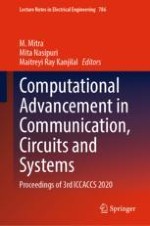This book gathers the proceedings of the Third International Conference on Computational Advancement in Communication Circuits and Systems (ICCACCS 2020), organized virtually by Narula Institute of Technology, Kolkata, India. The book presents peer-reviewed papers that highlight new theoretical and experimental findings in the fields of electronics and communication engineering, including interdisciplinary areas like advanced computing, pattern recognition and analysis, and signal and image processing. The respective papers cover a broad range of principles, techniques, and applications in microwave devices, communication and networking, signal and image processing, computations and mathematics, and control.
